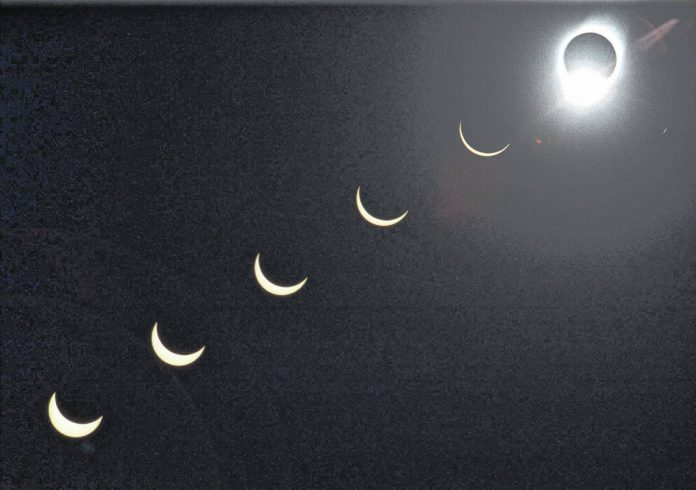LIMA — Things will be lining up for something truly special in northwest Ohio on April 8.
Those things will be the sun, the moon and planet Earth, as the region will experience its first eclipse since 2017. However, while that eclipse still left a sliver of the sun visible, this eclipse will cover the sun completely as the moon passes between the sun and Earth, giving northwest Ohio its first total eclipse since 1806.
This will be an event not to be missed, as the next total eclipse will not be seen in the contiguous United States until 2044, with the next total eclipse not being visible in Ohio until 2099.
This part of Ohio will be ground zero for eclipse viewers, as the 124-mile-wide path of totality, the area that will experience the total covering of the sun, will work its way northeast from Texas, Arkansas, southeast Missouri and southern Illinois and Indiana before traveling across much of Ohio.
Allen and Auglaize counties will be nearly in the center of that path, which will reach into Defiance, Henry and the southern tip of Lucas counties to the north and as far south as portions of Hamilton, Butler, Greene and Madison counties in western Ohio, casting a wider path than in 2017.
“The moon is actually a little bit closer to the earth on this eclipse than in 2017,” said Michael Richie, president of the Lima Astronomical Society.
The closer to the center of the path, the longer the sun will be covered, meaning that for viewers in Lima, the eclipse will last for nearly four minutes, Ritchie said. Areas farther from the center but still in the path of totality will still have a total eclipse but for a shorter duration.
“Here in Bowling Green, we’re just a shade over three minutes,” said Andrew Layden, Bowling Green State University professor and chair of the university’s physics and astronomy department. “If you go north to Toledo, you’re down to about a minute, or if you go south to Dayton, you’re at about a minute.”
While viewers are urged to wear protective eclipse glasses as the sun is being covered, once totality is reached, weather permitting, viewers are encouraged to remove their glasses to see unique phenomena before putting their glasses back on as the sun comes back into view as the eclipse moves away.
“Even to those that have seen it several times, it will bring tears to your eyes,” Ritchie said. “When the sun sets or rises, you have those pinks and oranges and reds on the horizon. You have that 360 degrees around you, and then everything becomes still, and it starts to get dark.”
Layden said it’s a rare chance to see the sun’s corona.
“What we’ll see then is the corona of the sun, this much fainter glowing atmosphere, basically of the sun,” Layden said. “It’s quite spectacular to me. The moon is so profoundly black as a circle, and then it’s got this crown of softly glowing white light about as bright as the full moon, and it’s got streamer shapes in it that come away from the sun, and that pattern is different with every eclipse. Because we’re near the maximum of sunspot activity, there’s likely to be a strong circular, almost flower-shaped pattern of the streamers coming out in every direction.”







